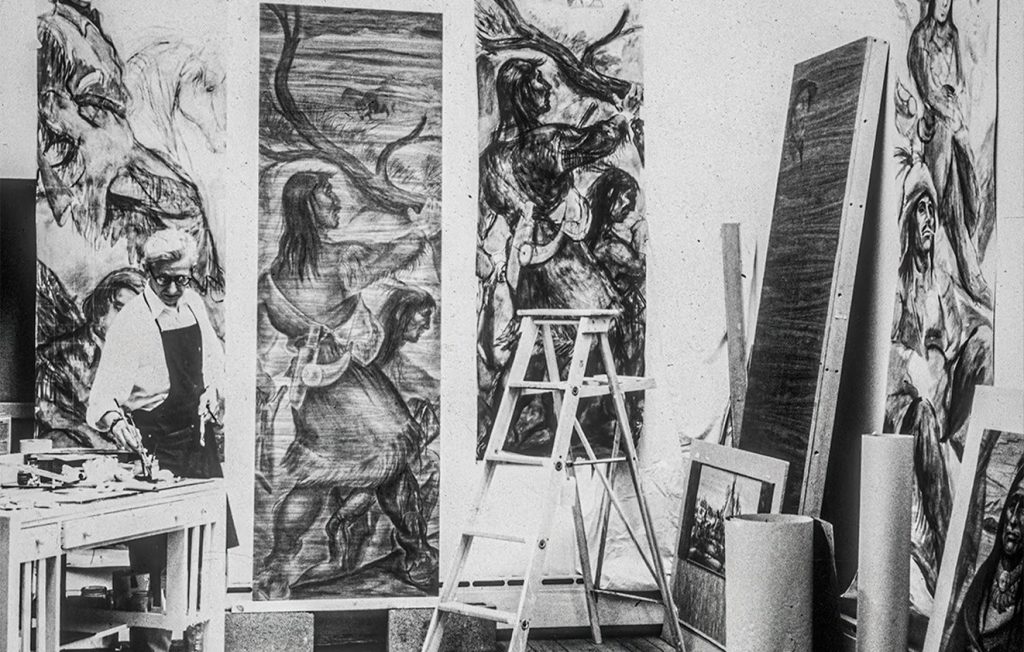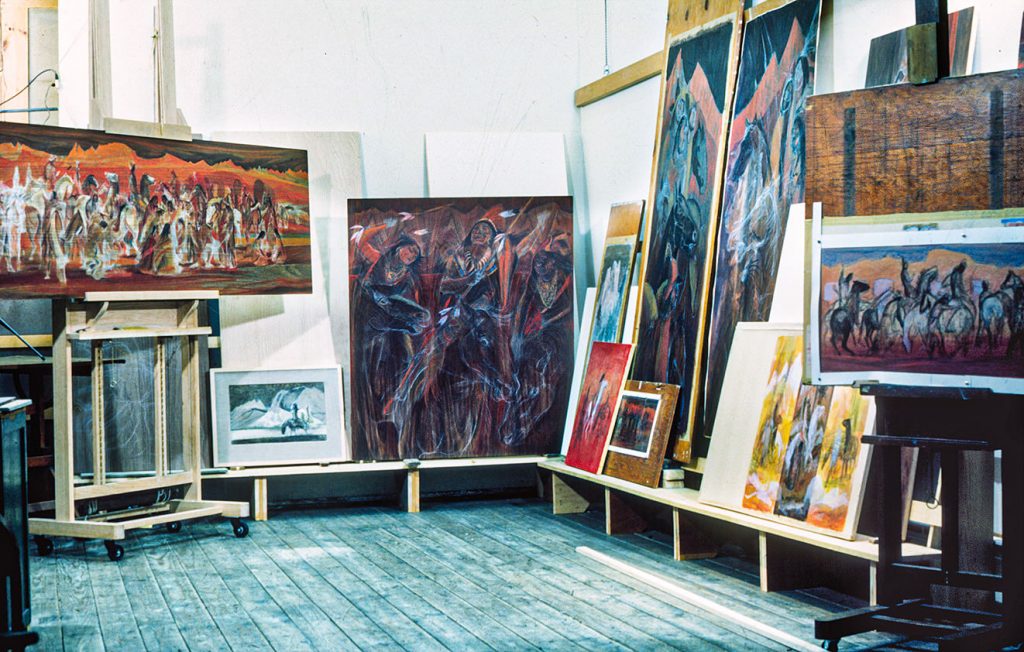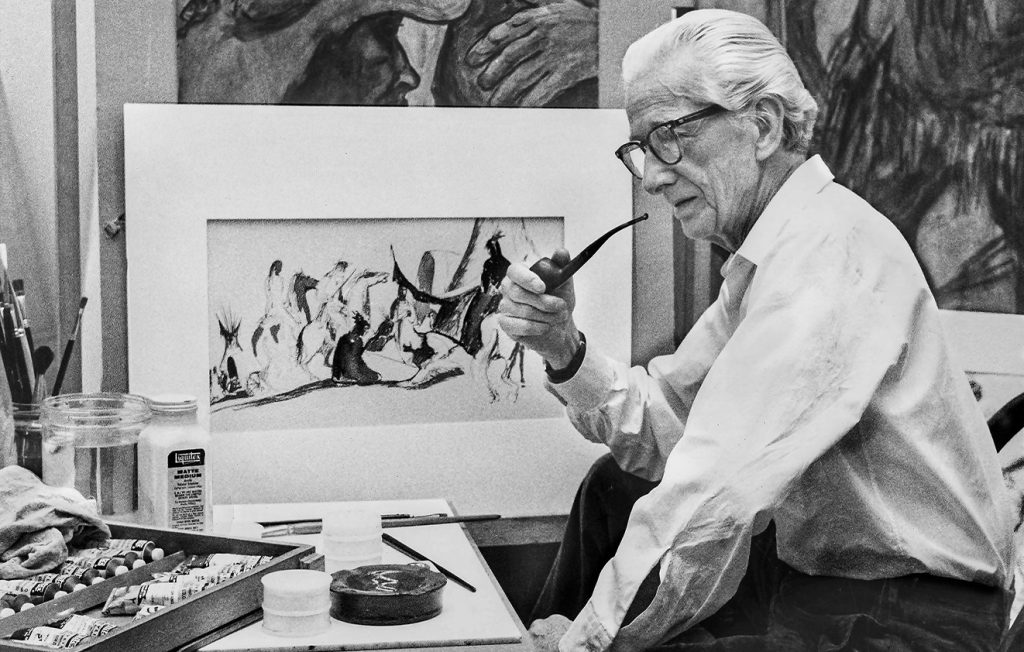



The career of artist Carl Roters spanned nearly the entire 20th century. Roters spent the first half of his career based in New York, where he became a renowned muralist and a professor of Art at Syracuse University. In the 1950s, Roters’ career changed direction when he won a competition to paint historic murals in Grand Teton National Park. The latter half of his career, based in Jackson Hole, Wyoming, focused on themes of American western history of significance to the area.
Born in Brooklyn, New York in 1898, Roters dropped out of high school at the age of fourteen to apprentice with Edward A. Wilson, one of America’s foremost book illustrators and designers.
He began his distinguished career first as an advertising illustrator and freelance artist, and later, from 1932 to 1937, as a lecturer in Fine Arts at the Stevens Institute of Technology in Hoboken, New Jersey. In his free time, he pursued his passion for painting. During this period, two major collections of his watercolor paintings, known as “New York by Night” and “Brigus” were exhibited at the Ferargil and Knoedler Galleries.
In 1938, Roters was awarded a commission to produce a watercolor mural for Consolidated Edison’s New York World’s Fair exhibit.
Even though he had never painted anything of such epic proportions, he readily took on the challenge. The resulting mural, fourteen feet long and one thousand square feet, was the world’s largest watercolor painting. The technical difficulties of its production resulted in several innovations, including scale-up techniques and the use of new substrates and media.


